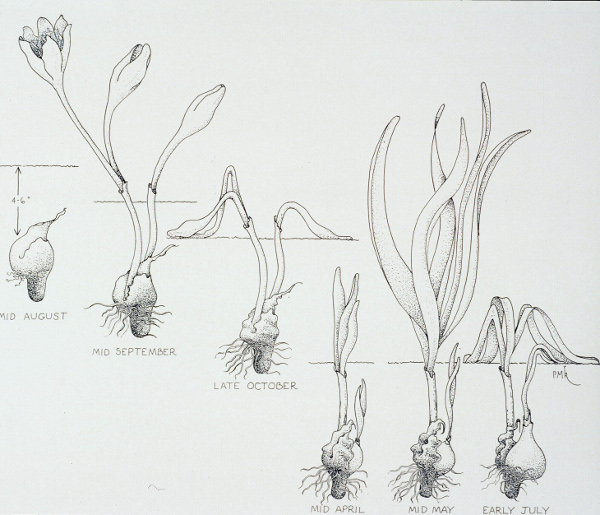
Their out-of-sync cycle of growth requires separate shipping in late summer,
not the bulk order of assorted fall planted / spring flowering bulbs.
.
If you have any comments, observations, or questions about what you read here, remember you can always Contact Me
All content included on this site such as text, graphics and images is protected by U.S and international copyright law.
The compilation of all content on this site is the exclusive property of the site copyright holder.
Autumn's Bulbs - the Colchicums
Wednesday, 23 September 2020
I am especially fond of flowering bulbs. My affection is their aesthetic appeal. The critters - deer, woodchucks, rabbits, chipmunks, mice, and voles. . . . their appreciation is gustatory. How pleasant then, to have something as lovely as colchicum which flower in autumn, require little maintenance, and are unappealing to the four footed dinner crowd. Their immunity is due to colchicine, a toxic chemical that has been used as a treatment for gout. It is also used to produce triploid and tetraploid mutations in the seeds of some plants. One case in point - Siberian iris.
Never heard of colchicum? There are a couple of reasons. First, you won't find them in the big box stores at this time of year, along with the various bags of tulips and daffodils. They need to be mail ordered, in early to mid-summer for shipment and planting in August. Brent and Becky's Bulbs is a reputable source.
Next, expect to pay more for colchicum than you will for run-of-the-mill tulips. Nurseries will sell more tulips than they will colchicums so they charge a premium.

Their out-of-sync cycle of growth requires separate shipping in late summer,
not the bulk order of assorted fall planted / spring flowering bulbs.
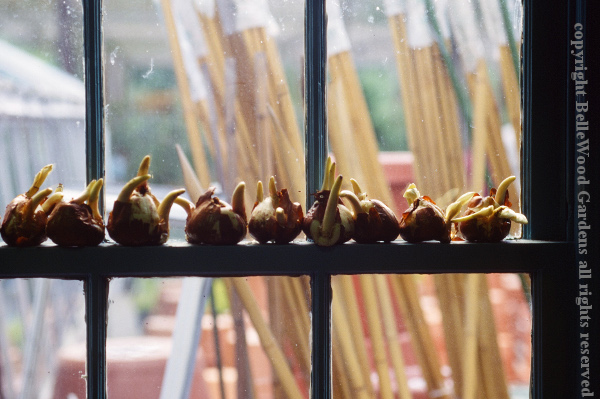
And while colchicum will bloom, naked, out of the earth, it is not a good thing.
For the best results, order early and plant promptly. Colchicum are worth it!
Common names offer possibilities and confusion. Colchicum are sometimes called "autumn crocus." There are autumn flowering crocus but these are not they. Crocus have but 3 stamens, colchicums have 6. Crocus, whether they flower in spring or in fall, are small. Colchicums make a statement. They're larger. And, by the way, colchicum make a great cut flower.
The growing sequence is like this: flowers in fall, naked, no leaves. Winter dormant. Leaves, quite coarse, in spring, then fade away as seed pods appear with seed formed from the previous year's flowers. Which gave rise to another common name of "the son before the father" as people confused the late summer seeds as arising before the flowers. True, but a different generation.
The genus name of Colchicum is so named from Colchis, the land to the east of the Black Sea to which the Argonauts journeyed in quest of the golden fleece. Colchicum species are native to mountainous areas of northern Turkey, the Caucasus and northern Iran.
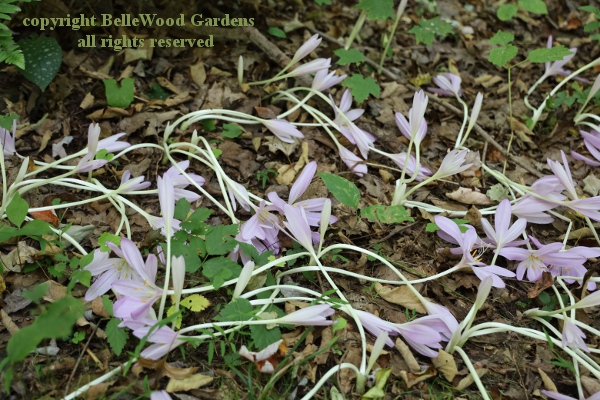
I think these Colchicum autumnale were planted about 20 years ago. The trees have grown, the site is shadier. They need to move. Best would be next summer when their leaves begin to wither. But if I move them now, cutting off the flowers as I do so, then next growing season's leaves will better nourish the corms, for better flowering in fall 2021. I'll move at least some.
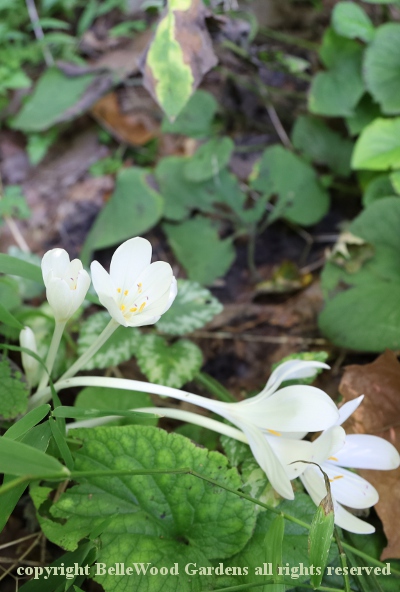
There are only a few Colchicum autumnale 'Album'. It would be easy
to relocate them to a more prominent site where they would show
off the purity of their pristine white flowers to more impressive effect.
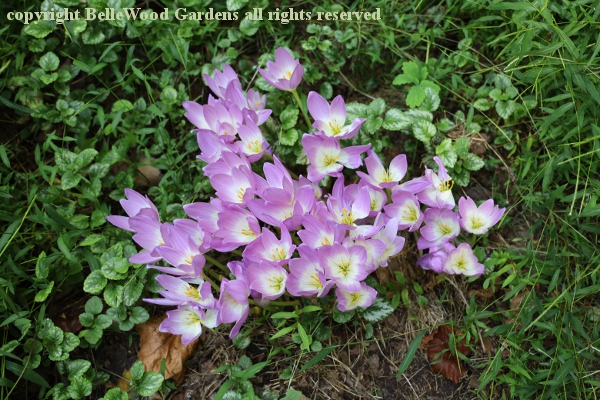
Not sure who this is. Either it's Colchicum bornmuelleri, or it's C. speciosum.
Anyone out there care to venture a guess? Aha! It's C. speciosum var bornmuelleri
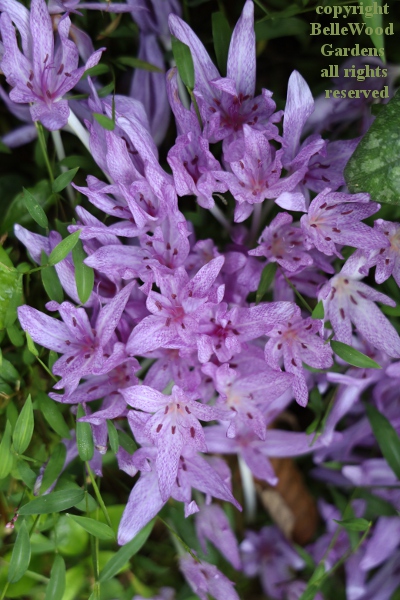
They are all "favorites." But Colchicum ×agrippinum especially so.
It's the tessellated patterning that I enjoy. Aggripinum is a hybrid
of C. variegatum with some other species, perhaps C. autumnale.
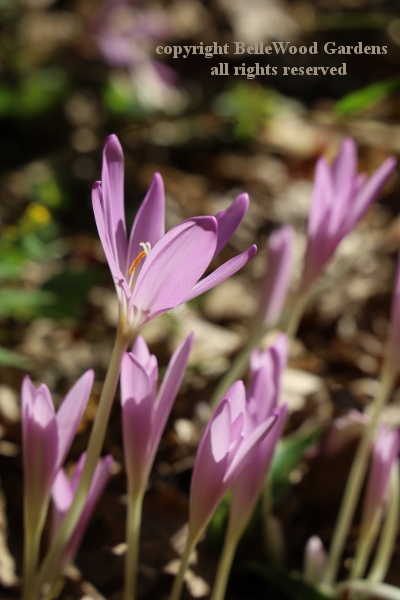
I think that we're back to Colchicum autumnale, However these
are growing in a sunnier site. Which might explain the richer color
seen here. And encourages me even more to transplant the pale
flowers lollygagging in the shade to a sunny place. We'll see . . .
Back to the main Diary Page